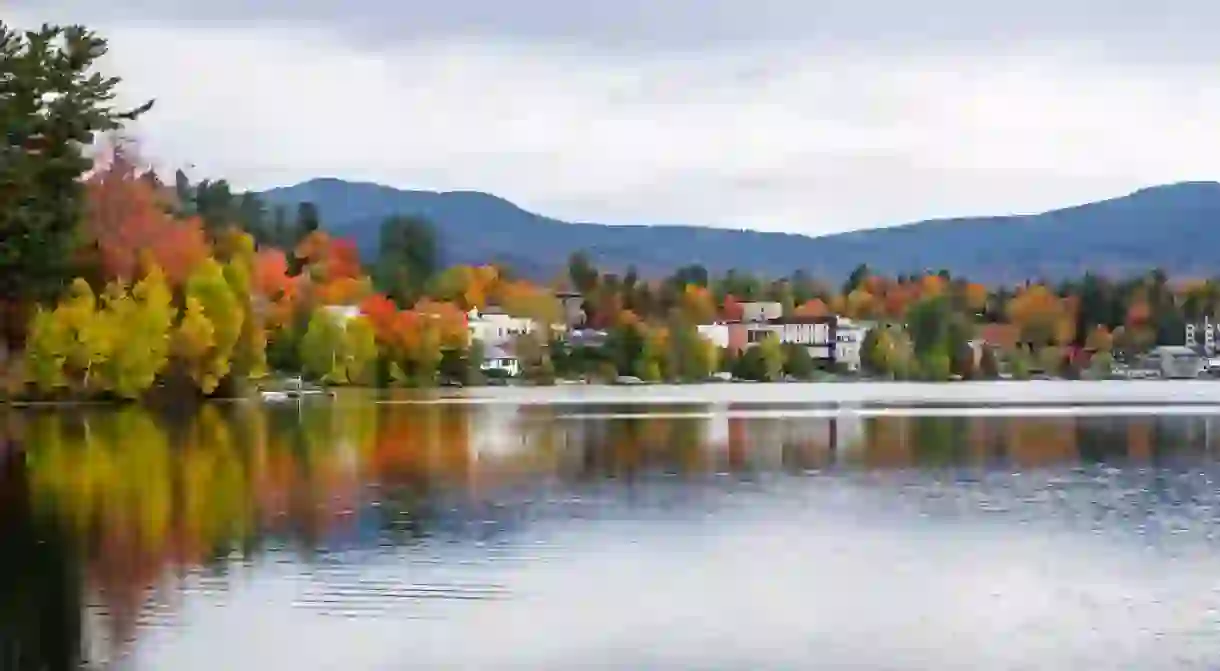The 10 Most Beautiful Towns to Visit in Upstate New York

When you think New York, you probably think of the industrial hubbub of Manhattan. However, there is much more to the Empire State than towering skyscrapers and rumbling subways. Why not escape the urban in some pristine countryside, or stay in a horror-inspiring village? You’ve not gotten the most out of your NY stay until you’ve given these beautiful towns in New York a fair shake.
Ithaca
Natural Feature

The city of Ithaca is widely known for stunning natural beauty and thriving local culture. Dine at one-of-a-kind restaurants, wander in and out of galleries, attend live-music events, and explore nearby gorges and the shores of Cayuga Lake. Home to a population of university students, Ithaca possesses a diverse community full of history and culture.
Watkins Glen
Natural Feature

Popular thanks to a close proximity to the bucolic Watkins Glen State Park, the village of Watkins Glen lies at the intersection between Seneca Lake and the Chemung River. It’s known for ties to auto racing throughout the 20th century and continues to attract tourists each year with summer festivals. When it’s not festival season, you can enjoy outdoor activities such as hiking, camping and fishing.
Cold Spring
Natural Feature

Saratoga Springs
Natural Feature
An ideal place to live within New York State, Saratoga Springs is a picturesque city north of Albany. The area was settled by English colonists in the 17th century and played an important role in the Revolutionary War. Today, Saratoga Springs is best known for horse racing. However, it also prospers culturally from the Saratoga Performing Arts Center, as well as the summer residencies of the New York City Ballet and the Philadelphia Orchestra.
Sleepy Hollow
Sports Center

New Paltz
Natural Feature

The beautiful town of New Paltz in Ulster County lies approximately 88mi (142km) from New York City and 70mi (113km) south of Albany. Largely characterized by the local student population, New Paltz is home to boutique shops and restaurants. The town offers countless outdoor activities, alongside several cultural and historical points of interest, including the Historic Huguenot Street and the Elting Memorial Library.
Skaneateles
Natural Feature

Located alongside Skaneateles Lake in Onondaga County, this village exudes natural beauty all year round. From charming inns and B&Bs to a historic downtown district with unique restaurants, Skaneateles is a perpetually popular among tourists, offering something for everyone and a piece of New York history.
Lake Placid
Natural Feature

Located in the Adirondack Mountains, the village of Lake Placid was listed in US News & World Report as one of the 6 Forgotten Vacation Spots in North America. Surrounded by natural beauty, Lake Placid is consistently popular among snow skiers, hikers and bikers. The village was founded in the 19th century, and today maintains plenty of original small-town charm.
Tarrytown
Natural Feature

Located only 31mi (50km) north of New York City, Tarrytown sits on the eastern shore of the Hudson River. Steeped in local history, with original Dutch settlements dating back to the 17th century, Tarrytown is an ideal destination for New Yorkers looking to escape the city for a day. The city guide of Tarry town include points of interest such as Lyndhurst Mansion, Jay Gould’s Gothic Revival estate; Sunnyside, the home of Washington Irving; and Castle Hotel & Spa, a 19th-century Norman-style castle on the Hudson River.
Woodstock
Historical Landmark, Architectural Landmark

A cultural center point, Woodstock is best known for sharing a name with the legendary 1969 music festival – despite it actually taking place 60mi (97km) away in Bethel. It remains a historical and cultural haven, though. The town was a leading site of the Hudson River School in the 19th century, followed by the Arts and Crafts Movement in the early 1900s. The founding of the Byrdcliffe Arts Colony further defined the cultural influence of Woodstock.













